Big Bend National Park is a magical place for the outdoor lover. Avid hikers will find a paradise of trails within the borders of this often misunderstood National Park. When folks think of west Texas, they picture empty desert. Not Big Bend. Trekkers have access to more than 150 miles of trails, enough to satisfy any single day or overnight backpacking trips. Yes, there are deserts, but you’ll find a spectacular array of colorful rock formations, the occasional oasis, and fossils, lots of fossils. Near the Rio Grande, you can hike along the riverside through paths boarded by reeds and mesquite, while canyon walls loom over you like watching sentinels. Within the Chisos Mountains, hike to elevations above 7,000 feet while surrounded by lush oak, fragrant junipers, and prickly pines.
After spending a month in this wondrous yet remote location, Hitch and I felt a new appreciation to this highly underrated National Park. Ever day we woke up to a golden sun blazing over rust colored mesas. At night, the milky way scattered itself across a dark sky like a river of stars. During the day, we explored portions of Big Bend National Park at a leisurely pace. For our first week, we drove into the desert side for our first expeditions.
Ross Maxwell Scenic Drive
One of our early journies carried us off on thirty-mile Ross Maxwell Scenic Drive on the west side of Big Bend. This lovely drive took us to the Castolon Historic District and Santa Elena Canyon. Along the way, we stopped at enough historic and geological sites to fill a day or two’s worth of exploring.
Sam Nail Ranch
For our first stop, we found ourselves sitting under the green shade of a marvelous oasis. As we sat, I tried to imagine Sam and Nina Nail carving out a living in this unforgiving desert. Like many homesteaders of their time, they dug a well, planted a garden, built pens for livestock, and a home. The windmill they built still pumps water keeping the trees and shrubs in the area alive. This little man-made oasis attracts animals such as javelinas, foxes, and ringtails. Various birds visit too, I remember seeing painted buntings, mockingbirds, and green-tailed towhees.
Lower Burro Mesa Pouroff Trail
Back on the road, we spotted a side trail and decided to take a chance. Since the kiosk indicated that the trail was only a one-mile hike, we meandered slowly upon Lower Burro Mesa Pouroff Trail. After a few hundred feet, the trail turned into a gravel drainage. Texas persimmons, with their strange sweet ripe black fruit, edged on either side of us, while colorful rocks and fossils fragments (brought here by seasonal flood water) lay at our feet. We promptly ended up in a narrow box canyon where water carved a deep channel into Burro Mesa. Here at the end of the trail, the base of a 100-foot dry pour-off was lined with smooth and nearly polished stones – each giving a silent testament to the power of water that floods this canyon during summer rains.
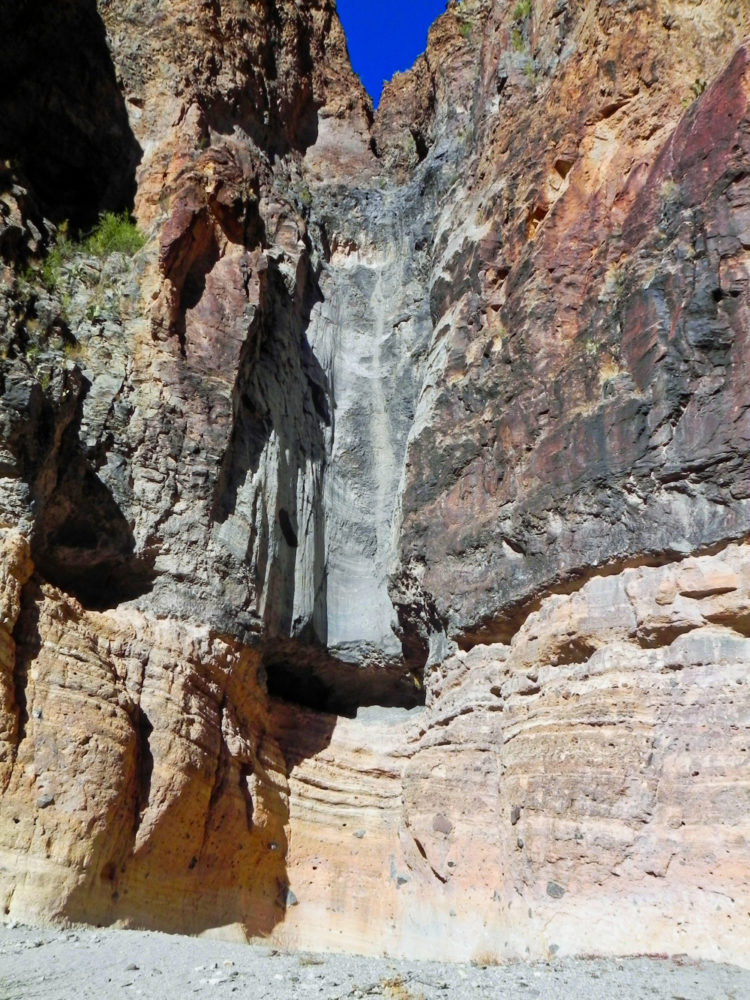
Burro Mesa Pouroff Trail
Mule Ears and Mule Ears Spring
Having finished our brisk hike, we made a hurried return to the truck and headed back on the road. Over the horizon, two dark peaks crept into view. Our curiosity urged us to take a side route to Mule Ears Overlook. From this location could see the tips of two peaks dominating the view. On another day we came back to hike Mule Ears Spring Trail. This breif and flat hike lead us through a garden filled with a dozen species of cacti, and the ever present desert-trio of sotol, lechuguilla, and yucca. At the end of a canyon, a spring resides at the center of a large green oasis. Nearby, the remains of a stone dwelling show traces of pipework leading to the stream. Clear, drinkable water always flows, but the volume is reduced to a trickle in dry weather, with a pool a few inches deep. We had to dodge paper wasps while visiting this tiny spring.
Tuff Canyon
From Mule Ears Overlook we took Ross Maxwell Road deeper south, and soon passed Tuff Canyon. At this observation point, there are three overlooks which offer great views into the canyon. We spotted a trailhead at the south end and decided to take the small hike part way down into the canyon itself. There we found excellent samples of tuff, a welded volcanic ash that make up most of the shallow but sheer-walled ravines.
Castolon Historic District
As we left Tuff Canyon behind, the sun shone in full force and shimmering mirages started to form on the road before us. As we crested a hill we passed by Cero Castillion and the bright ash flow rocks at its base. When we rounded to the other side of this curious mesa, we spotted a disheveled set of buildings in the distance. We took a slight turn into the parking lot and discovered a rest stop. Turns out that these buildings were once an established as a cavalry camp in the early Twentieth Century, Castolon later served as the headquarters of the La Harmonia Company. All of the buildings are built with adobe walls, and most are roofed with corrugated metal roofing. The shade awning is a kind of thatch made of Ocotillo branches. Today the buildings house a visitor center and camp store — where we bought cool drinks and snacks before heading on.
Santa Elena Canyon
From the road, the red dusty cliffs display themselves prominently, like a mysterious bastion of rock on the horizon. Upon our approach, we soon realized that the Rio Grande had sliced a vertical chasm out of pure limestone to form one of the most magnificent canyons in the park. If you stood atop the mesa and looked down to the river from a 1,500-foot height, you would see that the south wall is in Mexico, while the north wall is in Texas. Later in the week, we came back and hiked a fabulous trail which followed the river upstream then drops down to the canyon floor. If we owned a canoe, I know a float trip through the canyon would have been just as wonderful as the hike.
Old Maverick Road
After our initial stop at Santa Elena Canyon, we then drove the north fork on Old Maverick Road, which runs between Maverick Junction and Santa Elena Canyon. The 14-mile improved dirt road passes along the Terlingua Creek badlands on the west side of the park. We found the road to be a little rough and washboard, and a few times when we had to traverse a wash, but our 4×4 truck made agile work of it.
Luna’s Jacal
As we drove along Old Maverick Road we happened upon a small sunken rock hut known as Luna’s Jacal. A jacal is an indigenous Tejano dwelling suited to the desert environment. This one was built about 1890 with a low sandstone and limestone wall about 4 feet, with forked poles set upright into the walls, supporting roof poles. The far wall of the house backs up to a large boulder. The roof was made of ocotillo branches weighted down with earth and stones, presently replaced with an inappropriate soil-cement roof. The jacal belonged to Gilberto Luna, a Mexican pioneer farmer, who raised a large family and peacefully coexisting with otherwise hostile Comanche who used the Alamo Creek area as a war trail. According to the signs, Gilberto Luna died there in 1947 at age 108 or 109.
On that day, we also happen to meet an elderly gentleman, his daughter, and his son. After a brief conversation, we discovered that the older man was a son of Gilberto Luna and he was celebrating his birthday by visiting his birthplace. We felt lucky to have met someone tied to a historic place we were visiting. After wishing Señior Luna a “Feliz Cumpleaños,” we got back to our drive.
Rattlesnake Mountain
From Luna’s Jacal, we made our way up toward Rattlesnake Mountain. We took a brief stop at this is a rough campsite located on a plateau to enjoy an excellent 360-degree vista of the surrounding Chihuahuan Desert and distant mountains. If we didn’t have cats waiting for us back at the Airstream, it would have been the perfect place to spend the night under the blanket of the Milky Way
Back to Basecamp
By the time we reached Maverick Junction, our shadows were long and when we headed back west toward Lajitas, we drove off into the sunset like two characters in some cheesy western movie.
- Santa Elania Walls Rach over 1000 feet
- Ruins at Mule’s Ears Spring
- Santa Elena Canyon
- Rio Grande as it exits Santa Elania Canyon
- Chisos Mountains in Big Bend National Park, Texas
- Mule’s Ears Overlook
- Trail to Burro Mesa Pour-Off

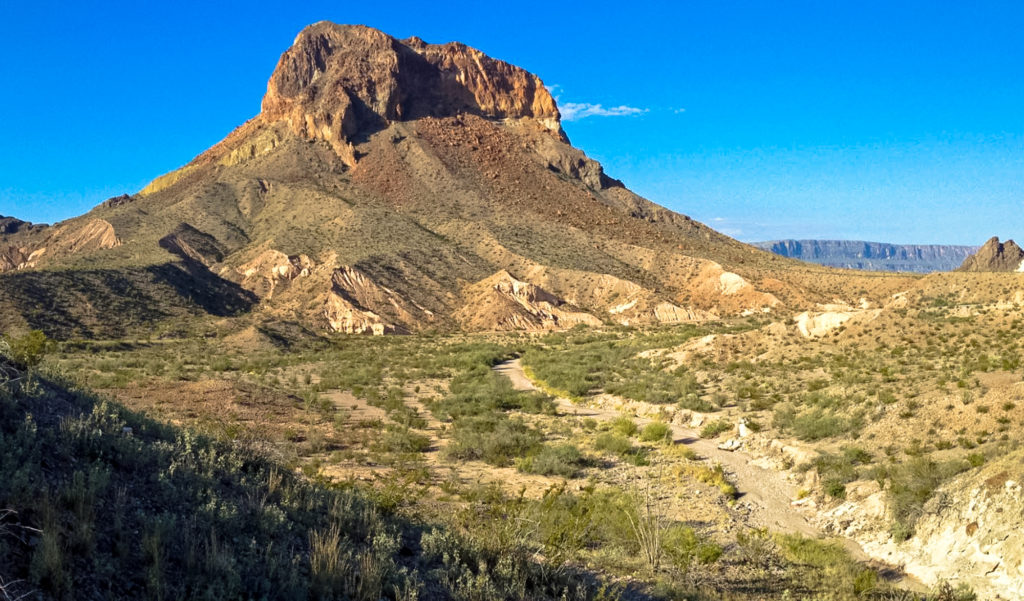
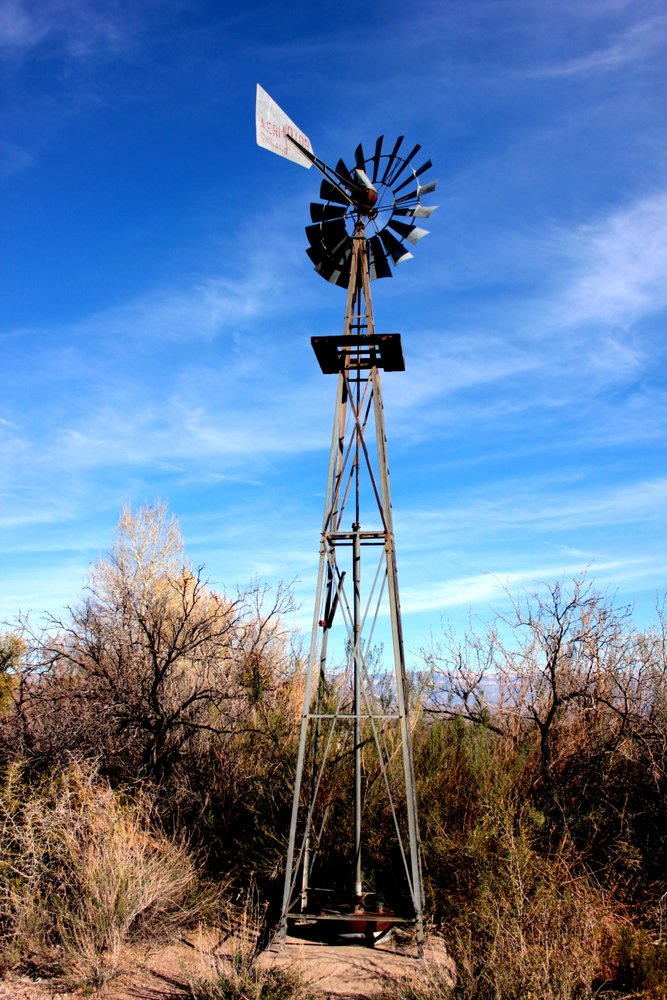
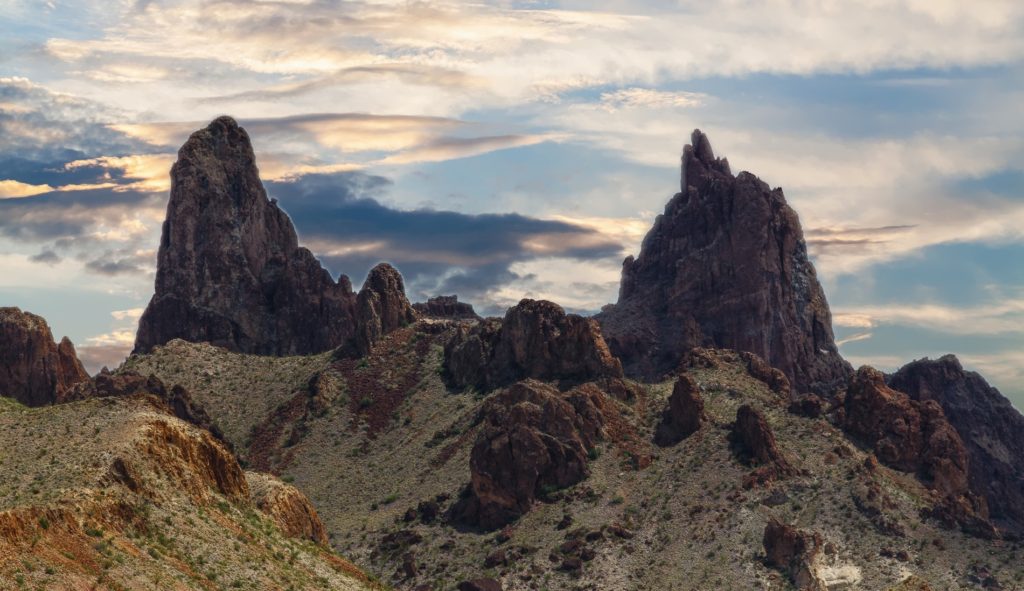
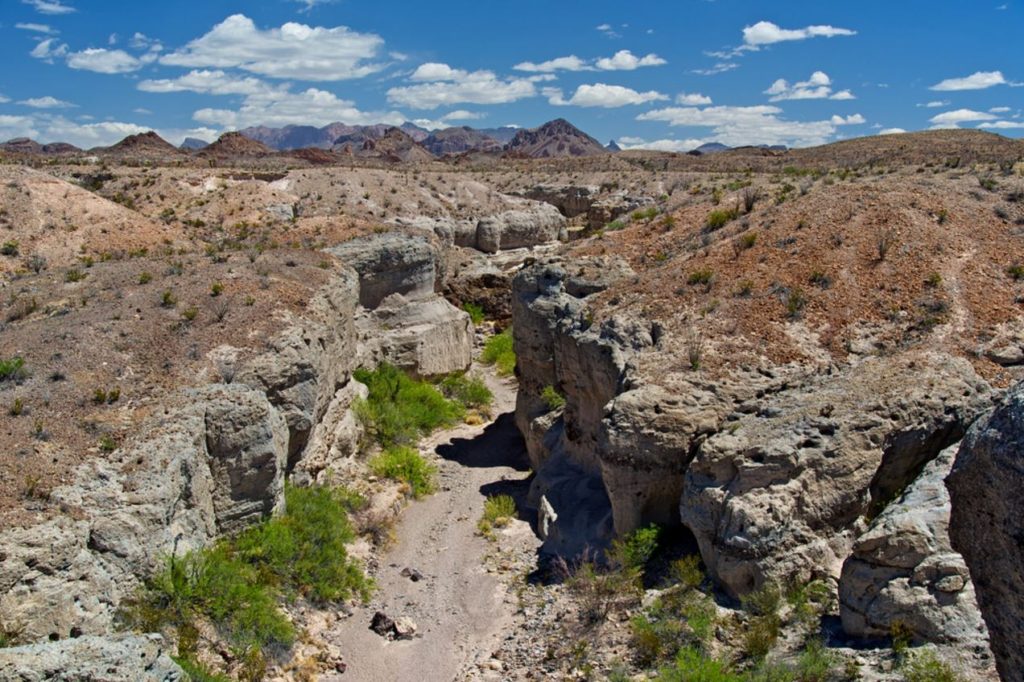
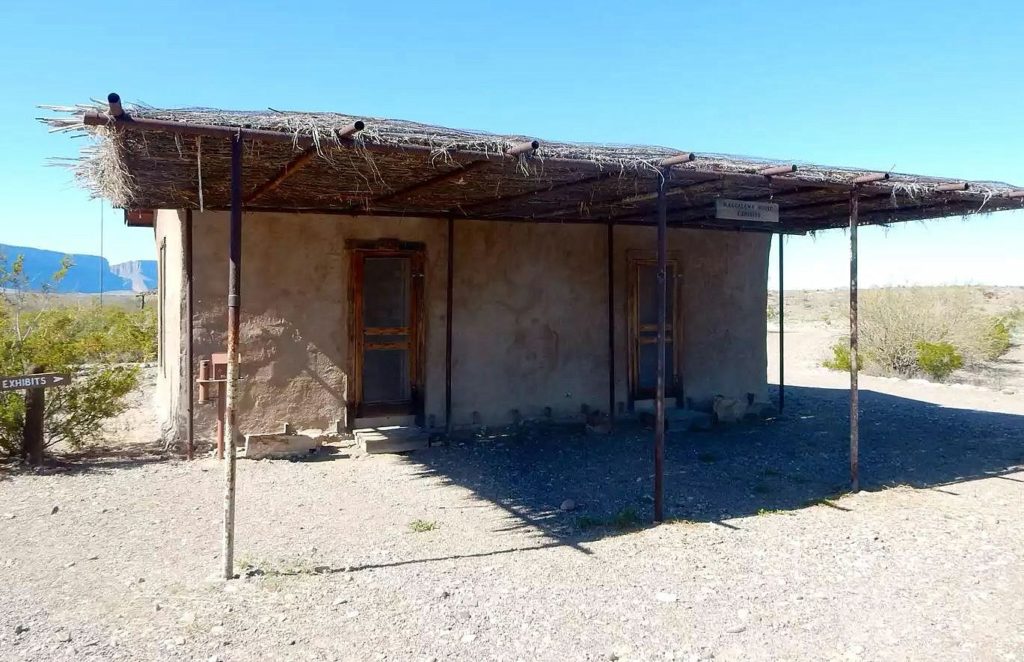
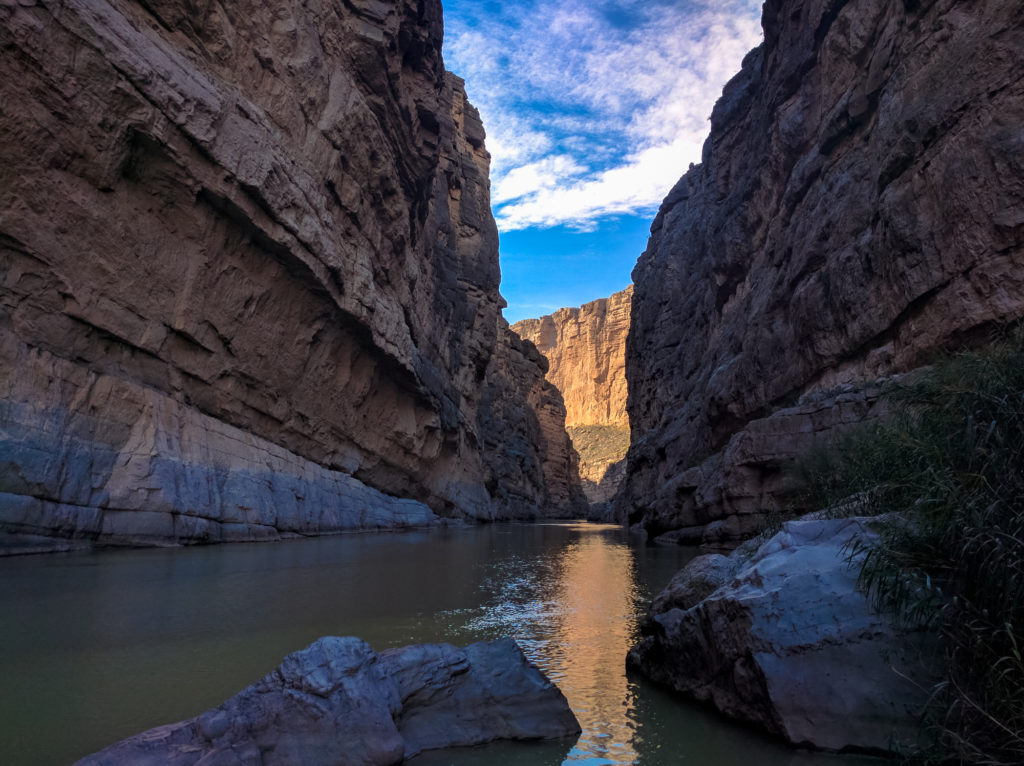
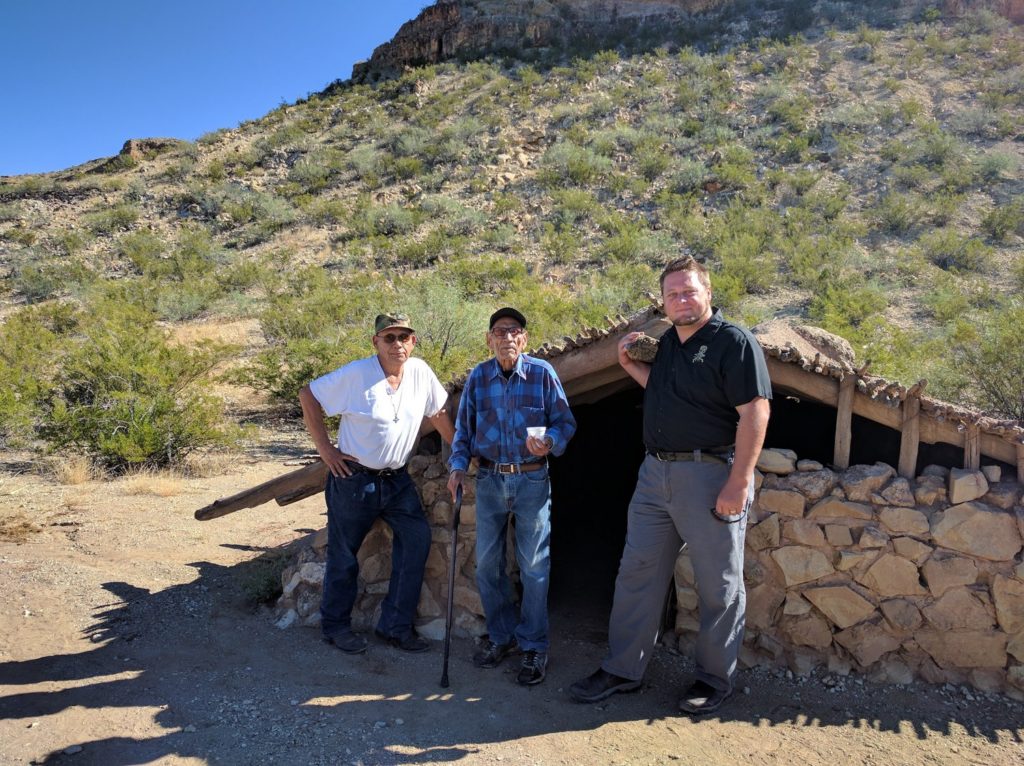
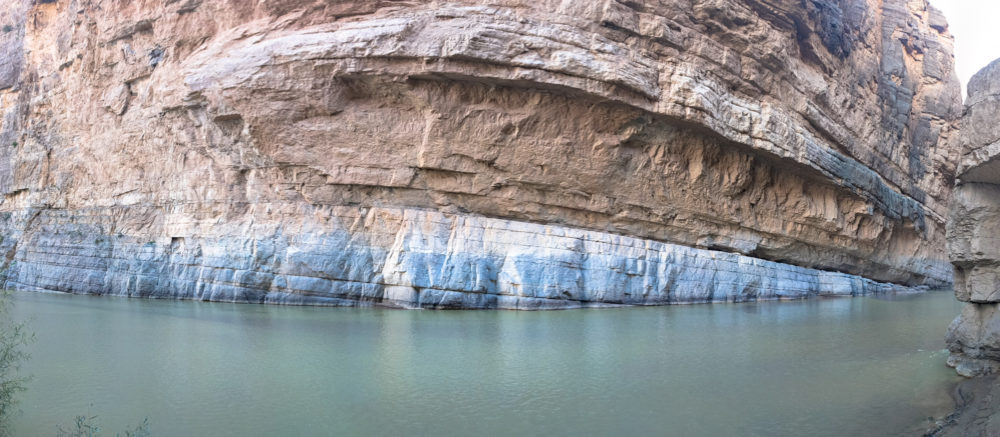
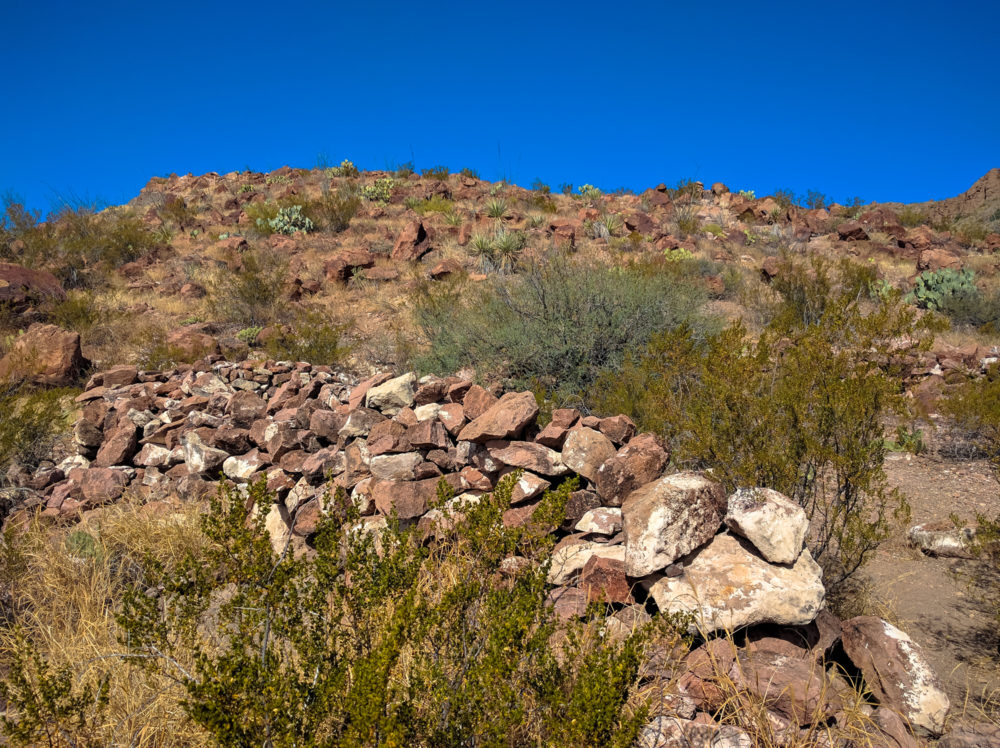
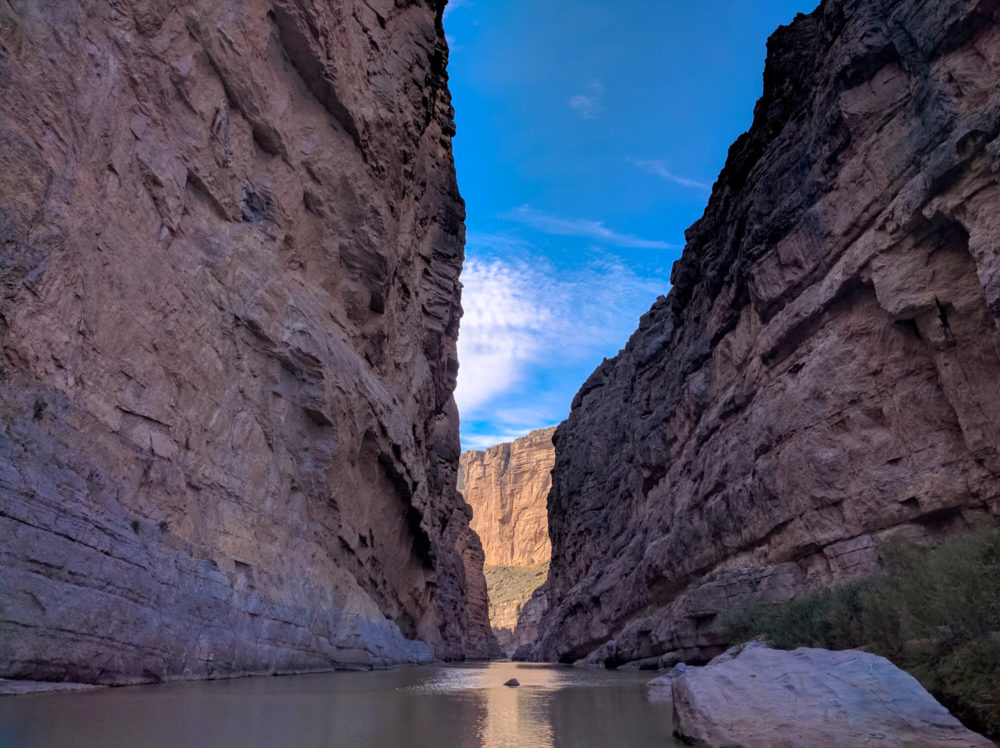
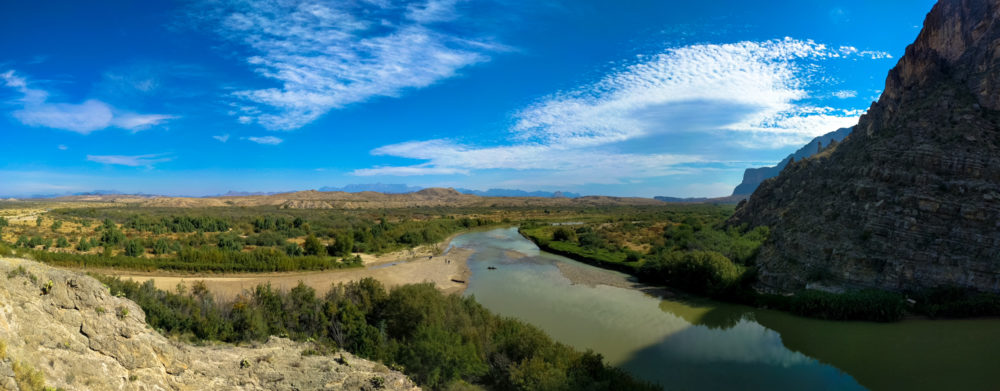
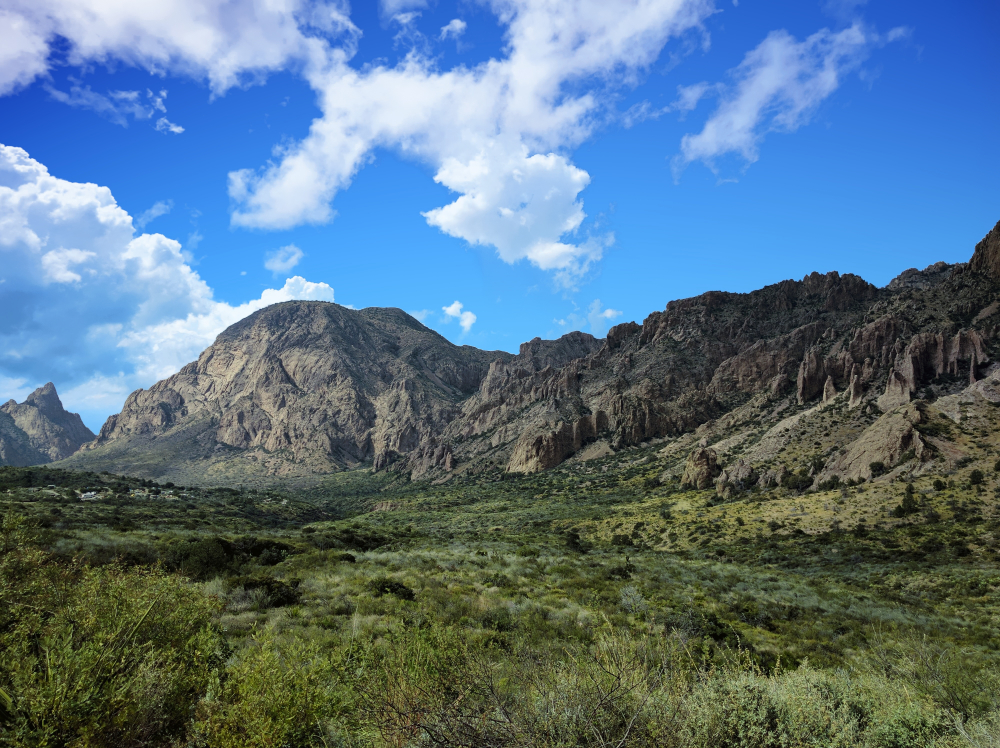
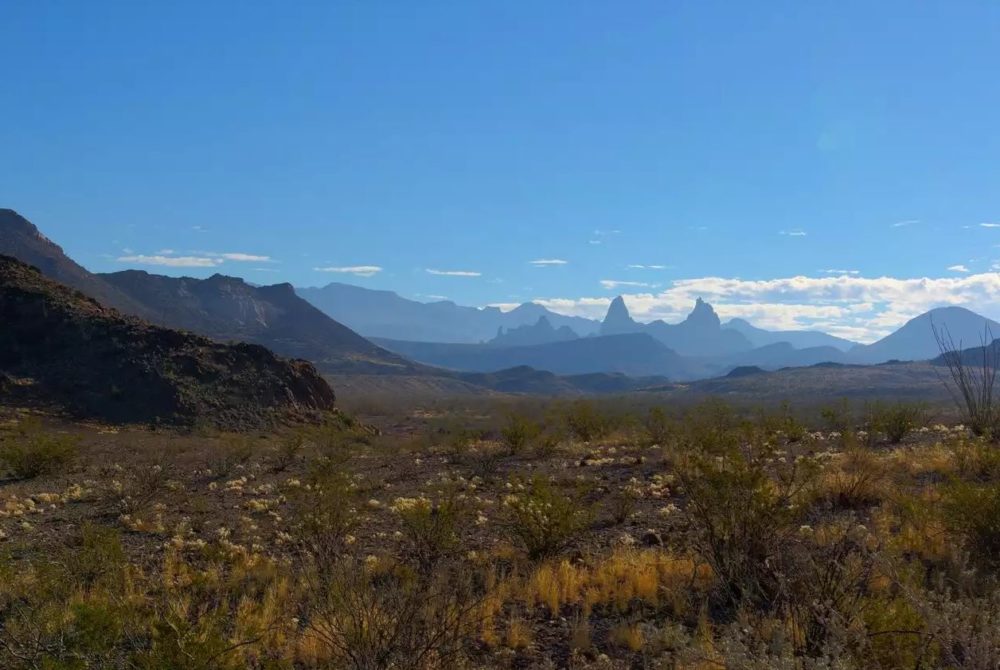
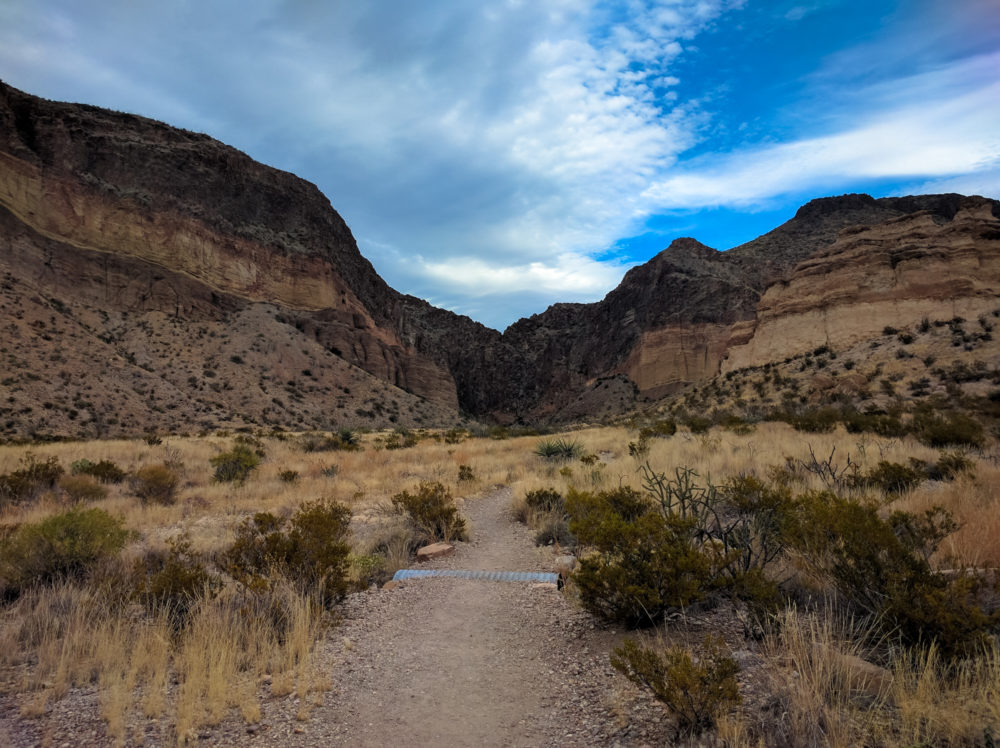
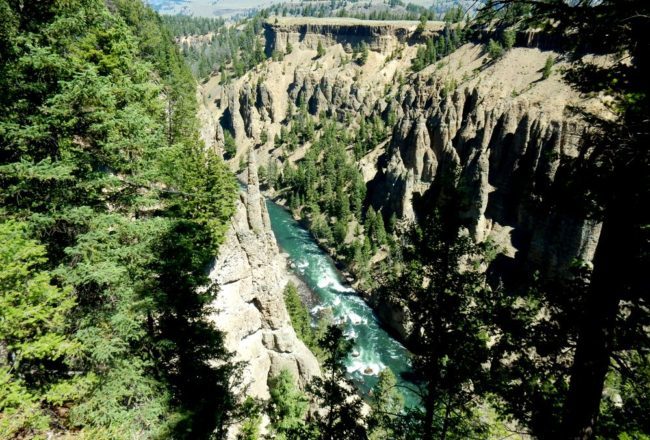
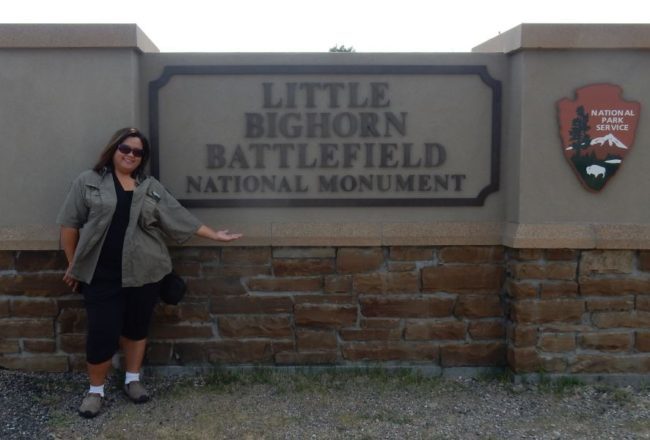
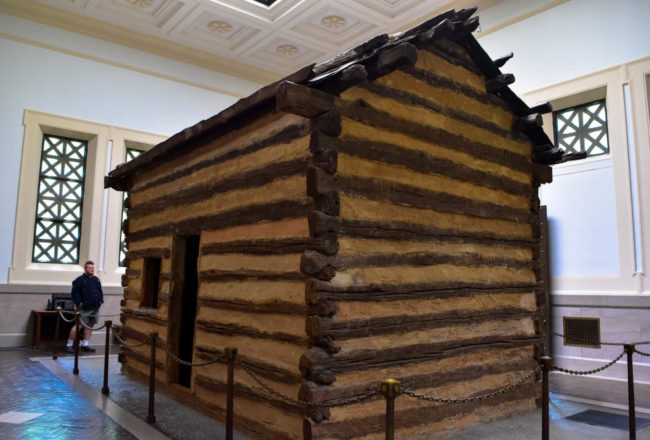


5 Comments
Hi, my name is Luz Elena and I just discovered that I’m a great-great-granddaughter of Gilberto Luna. MY grandmother is Martha Luna, daughter of Jose Luna (who was born in the jacal in 1920) son of Mr. Gilberto and Mrs. Bonifacia
Wow, that’s so cool! It’s amazing how traveling and writing can make so many connections. Thanks so much for leaving the comment here, and congratulations on the discovery! This meeting at the Jacal remains one of my favorite travel stories. It was such a cool coincidence and it really made the trip special for us. It seems to me you come from a pretty wonderful family!
Thanks for the fantastic photos and review of Big Bend N.P. Really expanded my view of Texas and is motivating a future visit. Had planned to backpack there years ago, but the travel time is extensive. Maybe my wife and I will see it from an RV. We’re thinking that one is in our future and am loving your and Hitch’s writings. Robb
Hi Robb! I hope you get a chance to visit, even if it is just for a few days. If you do go for an extended time with your RV, I would suggest staying at Maverick Ranch RV Park in Lajitas, Texas. It’s located 20 minutes drive from the west side entrance of Big Bend. Since we were staying a month we got a great deal at around $15 a day or about $450 for the whole month, including Full Hookups, 50 AMPs, and a Pull-through Site (See Hitch’s review: https://www.trailandhitch.com/maverick-ranch-rv-park-lajitas-texas/). Thanks for the kind words! 🙂
Trail, thanks so much for recommending Maverick Ranch RV Park, fantastic review, what a great spot to spend winter and explore. Just added your trip notes to my list of places to visit someday. I see an Airstream in our future! Robb and Gina